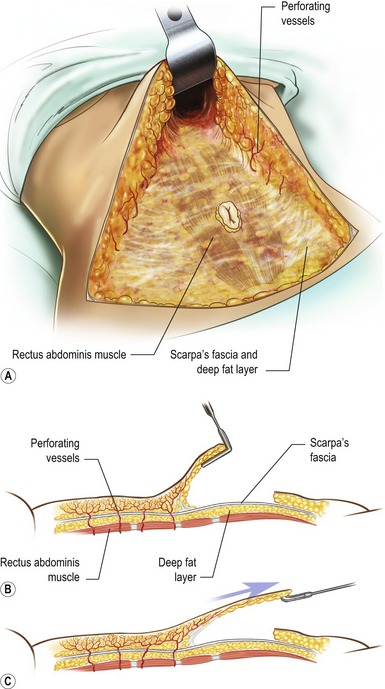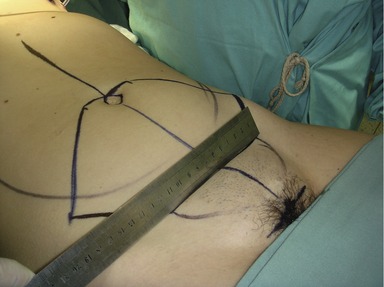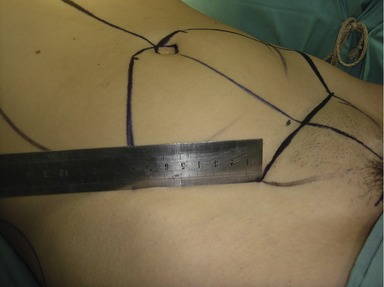CHAPTER 62 Lipoabdominoplasty: Saldanha’s technique
Physical evaluation
• The principles of this technique can be used in any kind of abdomen presenting flaccid skin, fat adiposity and diastasis of rectus muscle.
• This technique should be performed initially in patients with flaccid skin and in those who are overweight.
• There is a short learning curve, because surgeons are used to performing abdominoplasty and liposuction separately.
• Observe the possibility of ventral, lumbar and/or femoral hernias. Preoperative ultrasound of the abdominal wall is required, systematically.
• Beware of previous liposuction.
• Beware of previous scarring and previous endoscopic procedure.
• In borderline cases, begin with a high suprapubic incision.
Anatomy
Lipoabdominoplasty has aesthetic and reconstructive purposes. In order to achieve a complete reconstruction of the abdominal wall in the lower abdomen, we preserve the Scarpa’s fascia and partial deep fat layer in all of the lower abdomen (between the umbilicus scar and pubis). It will be completed when the superior flap comes down to the pubis (Fig. 62.1).
Technical steps
Marking
The horizontal suprapubic line is 12 cm and the distance from the vulvar commissure is 6–7 cm (Fig. 62.2). Two oblique lines of 8 cm each are drawn in the direction of the iliac crest, completing the incisional line (Fig. 62.3). All the liposuction area is marked, including the dorsal area, when necessary. For better orientation at the beginning of tunnel undermining, diastasis is previously marked.
Upper abdomen liposuction
In order to perform liposuction safely, the patient is placed in a supine position on the surgical table. The liposuction begins on the supra-umbilical region with a 3 and 4 mm cannula, removing the fat of the deep and superficial layers, extending to the flank and reaching the sub-mammary fold (Fig. 62.4
Stay updated, free articles. Join our Telegram channel

Full access? Get Clinical Tree











